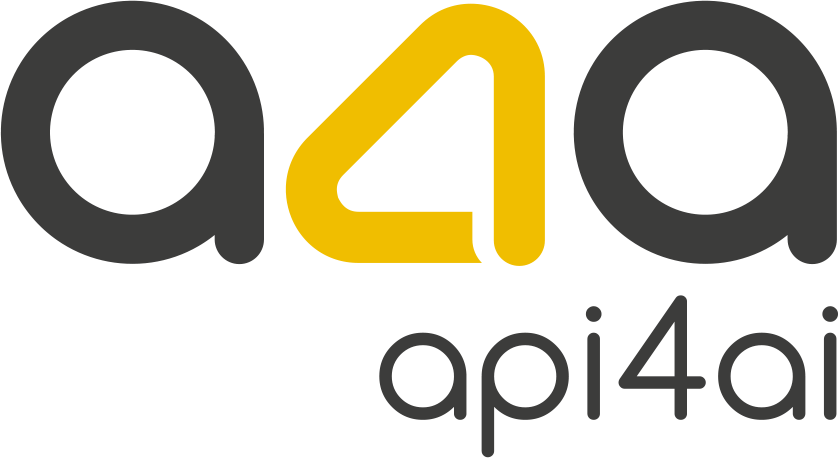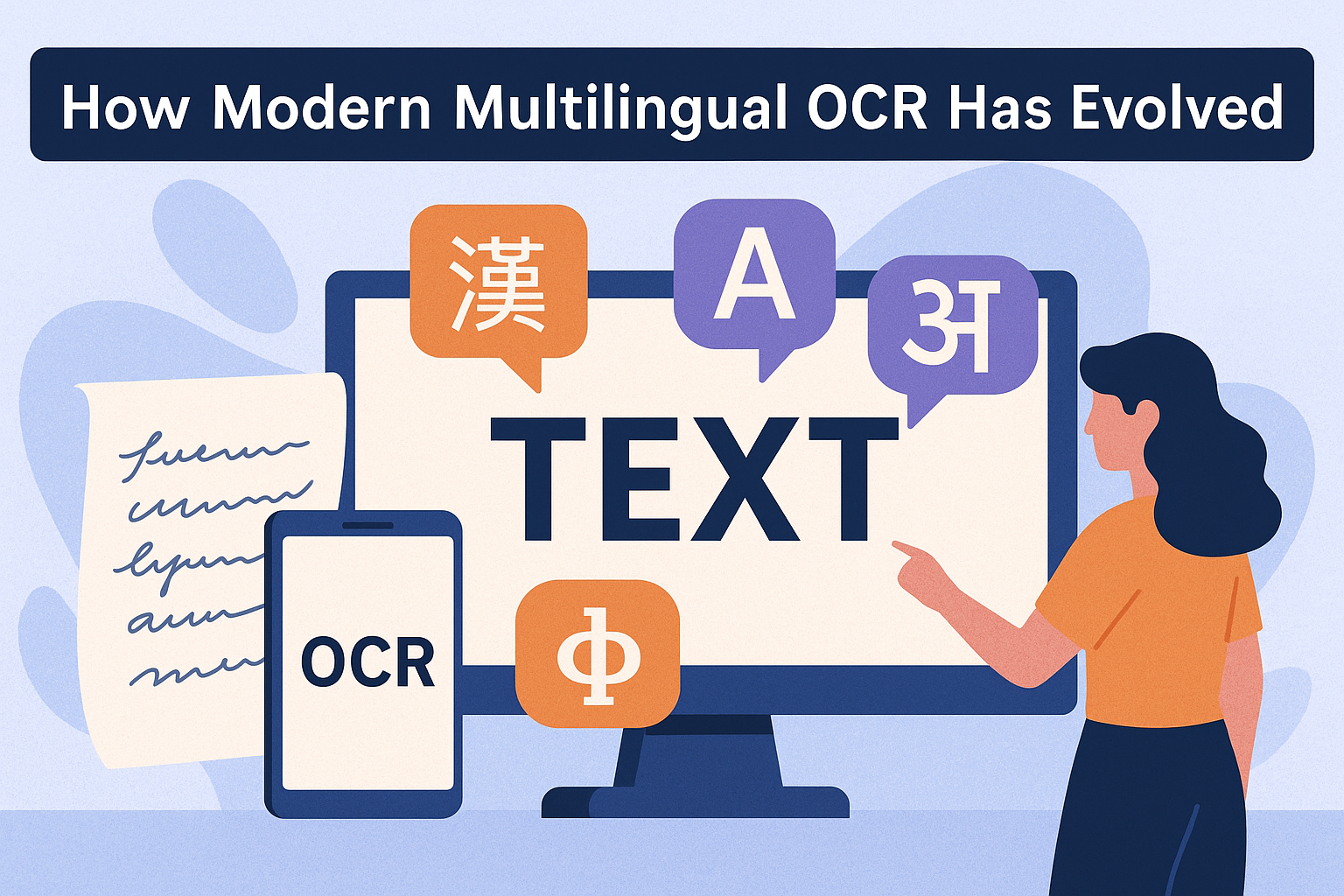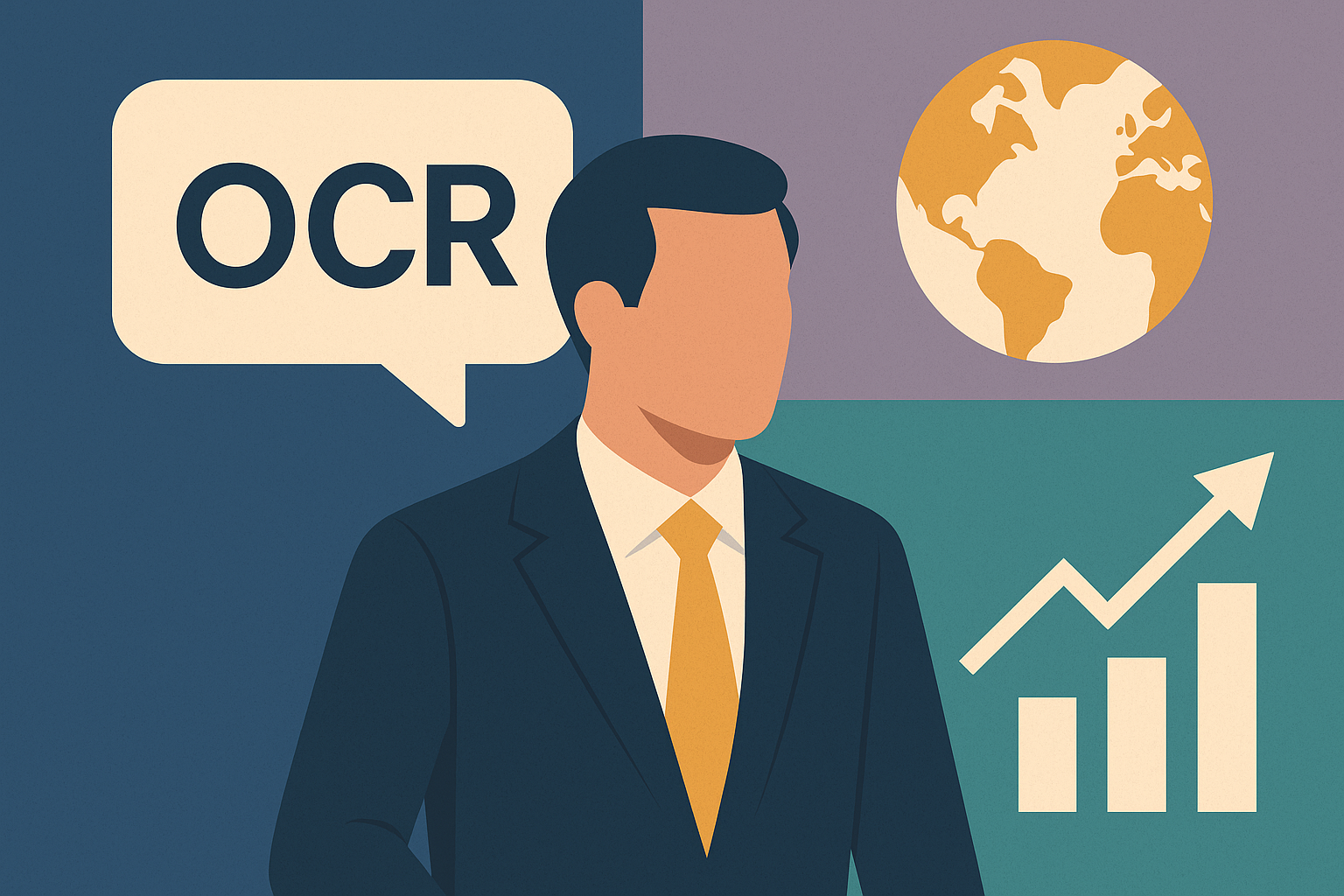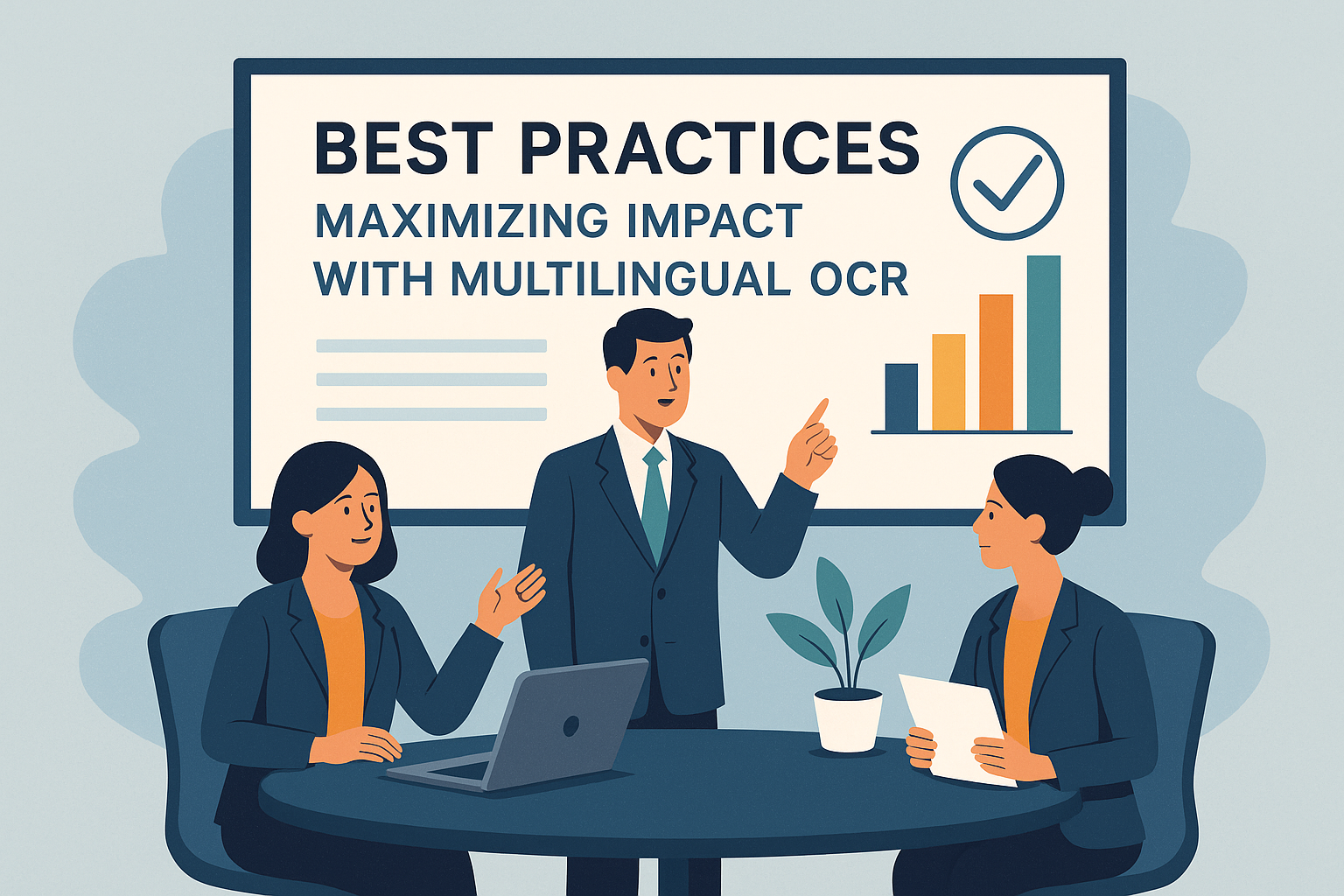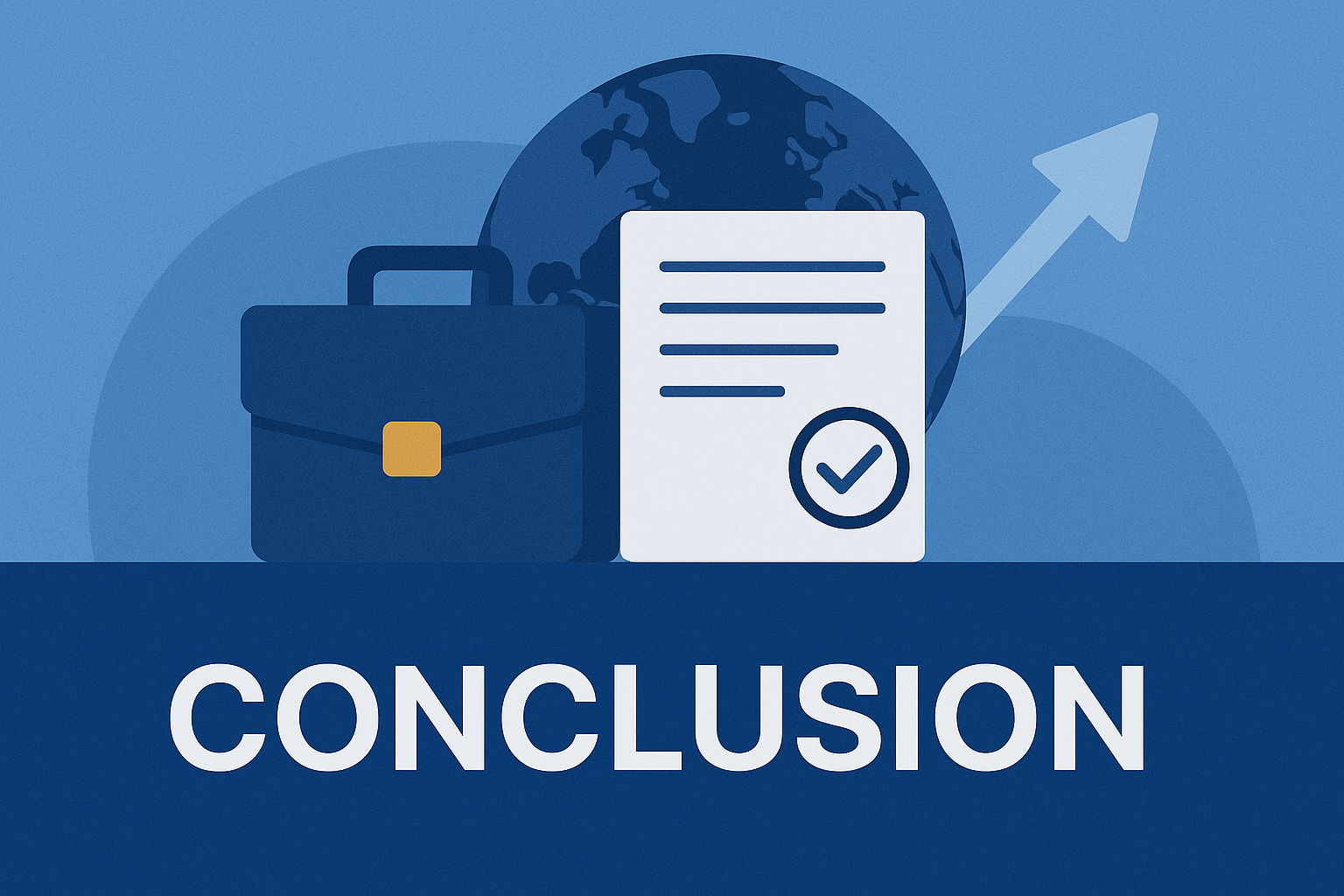Multilingual OCR: Going Global Without the Language Gap
Introduction
Global business no longer recognizes borders. Companies scale across markets faster than ever, and with that comes an avalanche of documents in multiple languages and formats: contracts, invoices, onboarding forms, compliance papers, even handwritten notes. For executives, the challenge is not about storing these documents — it is about extracting their value quickly, accurately, and consistently across every geography.
This is where multilingual Optical Character Recognition (OCR) has become a critical enabler. Unlike the early days of OCR, when solutions were limited to a few widely used scripts and simple typefaces, modern AI-driven OCR systems can now recognize dozens of languages across Latin, Cyrillic, Arabic, Chinese, and more, even when the input is handwritten or embedded in complex layouts. In practice, this means an organization can seamlessly convert a scanned invoice in Mandarin, a passport in Arabic, or a handwritten consent form in Spanish into structured, machine-readable data — without needing a team of local language experts.
The strategic impact for leaders is substantial. Multilingual OCR helps accelerate international onboarding, where identity documents often vary not only in format but also in language. It streamlines invoice processing across subsidiaries and suppliers worldwide, cutting operational bottlenecks that once required regional staff or third-party specialists. It also ensures that vast archives of contracts, HR files, and regulatory records become searchable and retrievable, delivering compliance and audit readiness across jurisdictions.
For C-level decision makers, the implications are clear: the ability to digitize and interpret documents in any language is no longer a back-office efficiency — it is a growth enabler. Multilingual OCR reduces costs tied to manual processing, strengthens global compliance, and ensures that the organization remains agile in the face of increasing cross-border complexity. In an era where speed, compliance, and scale define competitive advantage, bridging the language gap in document workflows is not optional — it is strategic.
The Business Imperative: Borderless Operations Demand Borderless Document Intelligence
For modern enterprises, growth rarely stops at national borders. Expansion into new markets, globalized supply chains, and distributed teams mean that executives are constantly managing documents that originate in different languages, formats, and regulatory environments. A single multinational merger or regional expansion can multiply the complexity of document management overnight.
Traditionally, organizations have relied on local specialists — translators, compliance officers, and clerical staff fluent in the local language — to interpret and process these materials. While effective on a small scale, this approach is expensive, slow, and prone to error as volumes increase. The reality is that every invoice delayed, every compliance document misunderstood, and every customer onboarding slowed by manual interpretation translates into higher operational costs and lost opportunities.
At the same time, customer expectations are changing. Whether opening a bank account, signing an employment contract, or registering for a new digital service, clients expect frictionless onboarding — regardless of the language on their passport or identity card. Invoices and compliance documents must move at digital speed to maintain strong relationships with suppliers, regulators, and partners. Sluggish processes not only frustrate stakeholders but also weaken the enterprise’s reputation as a global-ready organization.
This is why multilingual document intelligence powered by OCR has shifted from a technical tool to a strategic asset. With the ability to extract and standardize data from documents in dozens of languages, enterprises can:
Accelerate cross-border workflows by automating extraction of key information from local documents.
Maintain compliance at scale by ensuring multilingual regulatory paperwork is captured accurately and is audit-ready.
Enable global workforce efficiency by eliminating the dependency on manual interpretation for everyday documents.
For C-level leaders, the imperative is clear: competing in a global economy requires infrastructure that scales beyond borders. Just as cloud computing removed geographic limits from IT infrastructure, multilingual OCR removes linguistic barriers from business workflows. The winners will be those who integrate this capability not as an afterthought, but as a foundation for scalable, borderless operations.
How Modern Multilingual OCR Has Evolved
Optical Character Recognition has existed for decades, but its early form was narrow in scope and highly inconsistent. Traditional OCR tools were built to recognize only a limited set of typewritten characters, often requiring pristine scans and standardized fonts. For executives, this meant that OCR was a niche utility rather than a transformative technology — useful for digitizing a stack of printed pages, but ineffective in handling the messy, multilingual reality of business documents.
The evolution came with AI and machine learning, which fundamentally redefined what OCR could achieve. Instead of relying on rigid pattern matching, modern OCR leverages deep learning models trained on millions of examples across languages, fonts, and layouts. As a result, today’s systems can:
Interpret dozens of languages and scripts simultaneously, from widely used alphabets like Latin and Cyrillic to complex logographic systems like Chinese and Japanese.
Handle handwriting and mixed content, whether it’s a signed contract in Arabic, a doctor’s handwritten note in French, or an invoice with both typed and cursive elements.
Adapt to real-world imperfections, such as skewed scans, shadows, stamps, seals, and low-quality images that once caused legacy OCR systems to fail.
Extract structured information from complex layouts, turning invoices, IDs, or compliance forms into clean, machine-readable data ready for integration into ERP or CRM systems.
This evolution has elevated OCR from a supporting role to a strategic enabler of global operations. What was once a manual bottleneck requiring local expertise can now be automated at scale, with a higher degree of accuracy than human clerks can consistently deliver.
For C-Level decision makers, the significance lies not just in the technology itself but in the business impact it unlocks: faster time-to-value in new markets, the ability to meet compliance standards across regions without ballooning headcount, and the capability to centralize document intelligence in the cloud. Multilingual OCR has matured into an enterprise-grade capability — one that is no longer limited to back-office optimization but is central to driving efficiency, compliance, and customer satisfaction in global operations.
Strategic Use Cases That Matter to Leaders
While the technical capabilities of multilingual OCR are impressive, the real question for executives is where it creates tangible business value. The most compelling use cases are those that directly influence cost, compliance, and customer experience — three areas where leadership attention is always focused.
Global Onboarding and KYC
Customer acquisition is often slowed by identity verification and Know Your Customer (KYC) procedures. Passports, driver’s licenses, and national IDs arrive in dozens of formats and languages, from Latin scripts to Arabic or Cyrillic. Traditionally, each new region required dedicated staff with local language expertise. Multilingual OCR changes the equation: documents can be scanned, verified, and processed in seconds, regardless of origin. This enables faster onboarding, smoother compliance with international regulations, and a customer experience that feels seamless rather than bureaucratic. For executives, this translates into lower onboarding costs and faster revenue realization.
International Invoice and Document Processing
Finance teams managing suppliers across multiple regions face an avalanche of invoices in different languages and layouts. Manually keying in vendor names, invoice numbers, and payment details is costly and error-prone. Multilingual OCR automates this process, instantly converting local-language documents into structured, standardized data that flows into enterprise resource planning (ERP) systems. The result is faster payment cycles, reduced administrative overhead, and greater control over cash flow across borders.
Global Archival and Document Retrieval
Enterprises often sit on decades of accumulated paperwork — contracts, HR files, compliance records — spanning multiple languages. Without multilingual OCR, these archives remain static and difficult to search. Once digitized and indexed, they become a strategic knowledge base: executives gain faster access to past contracts during negotiations, compliance teams retrieve regulatory documents instantly, and auditors benefit from full transparency. What was once a liability in terms of storage and accessibility becomes an asset.
Compliance and Regulatory Readiness
Global expansion comes with varied and often stringent regulatory obligations. Legal filings, tax forms, and compliance records must be accurate and accessible in their original languages. Multilingual OCR ensures that this documentation is digitized correctly and can be monitored centrally, reducing the risk of non-compliance fines or reputational damage. For leadership, this strengthens governance while avoiding the cost of maintaining redundant local compliance teams.
The lesson for executives is clear: multilingual OCR is not a niche technology — it is a scalable operational capabilitythat touches the most critical aspects of enterprise performance. Whether accelerating revenue through faster onboarding, protecting margins through automated invoice handling, or safeguarding reputation with better compliance, it enables leaders to remove barriers that once slowed global growth.
Why Multilingual OCR Is More Than Just Technology — It’s Strategy
For many organizations, the temptation is to view multilingual OCR as a back-office tool — useful, but not transformative. In reality, it has become a strategic capability that directly impacts financial performance, operational scalability, and competitive resilience.
Operational Efficiency That Scales
Manual document processing — whether translating invoices, onboarding clients, or digitizing compliance forms — is not only expensive but also inherently limited in scale. Multilingual OCR eliminates this dependency by converting documents into structured, usable data instantly. Executives can expect processing times to shrink from hours to minutes, reducing the need for specialized staff and creating a consistent, standardized workflow across every market. This frees resources to focus on value-creating activities rather than repetitive clerical tasks.
Cost Optimization Without Cutting Corners
Labor costs rise sharply when each new region requires local clerks, translators, and compliance officers. By automating these workflows, organizations reduce overhead without compromising accuracy. In many cases, enterprises report double-digit reductions in administrative costs once OCR becomes a core component of their document pipeline. Beyond cost savings, fewer errors in financial and compliance documents directly reduce risks that can lead to penalties or lost business.
Speed as a Competitive Differentiator
Global growth is often slowed not by strategy but by execution bottlenecks. Slow onboarding frustrates customers, delayed invoice handling disrupts supply chains, and inaccessible archives hinder decision-making. Multilingual OCR addresses all three, enabling enterprises to operate at digital speed. For leadership, this agility is not just operational — it is strategic. A business that can onboard new clients in minutes or close supplier payments faster has a direct edge in winning and retaining global relationships.
Compliance and Risk Mitigation
Inconsistent handling of foreign-language documents exposes enterprises to regulatory risk. Multilingual OCR mitigates this by ensuring accuracy, standardization, and audit-ready documentation across all regions. This reduces exposure to compliance failures and strengthens governance — two areas that remain high on any executive agenda.
Long-Term Strategic Advantage
Most importantly, multilingual OCR is not a short-term efficiency play. It becomes part of the enterprise’s digital foundation, enabling integration with automation platforms, ERP systems, and AI-driven analytics. Over time, this foundation pays compounding dividends: lower cost per transaction, faster global scaling, and stronger margins. Organizations that adopt it now build a structural advantage that competitors without such capabilities will struggle to match.
In short, multilingual OCR is not simply about recognizing text — it is about removing barriers to growth, reducing structural costs, and future-proofing operations. For C-level leaders, this is less a technology investment than a strategic decision to make the enterprise faster, leaner, and more globally competitive.
Best Practices: Maximizing Impact with Multilingual OCR
Adopting multilingual OCR is not a matter of “plug and play.” To extract its full value, enterprises must align the technology with business strategy, governance, and long-term scalability. Executives should view it as part of a document intelligence strategy, not a tactical IT project. Several best practices can guide this journey:
1. Align Language Capabilities with Growth Strategy
Not every language is equally critical. A company expanding into Southeast Asia will prioritize Thai, Vietnamese, and Mandarin, while a manufacturer working with Eastern Europe will need Cyrillic coverage. Executives should start by mapping target languages to business expansion plans. This ensures that OCR investments directly support growth markets rather than spreading resources thinly.
2. Integrate OCR into Core Workflows
OCR alone provides digital text, but the real value emerges when it connects with existing systems. For finance, that means routing extracted invoice data directly into ERP. For HR, it’s feeding onboarding documents into identity verification platforms. For compliance, it’s pushing regulatory filings into document management systems. Leaders should insist that OCR is treated as part of the automation backbone, not as a standalone tool.
3. Insist on Accuracy and Benchmarking
Accuracy across scripts, fonts, and handwritten input varies. It is vital to benchmark OCR performance before full rollout. Test with real-world documents from target markets — faded stamps, handwritten signatures, multilingual invoices — to ensure the technology meets operational needs. Executives should mandate clear reporting on error rates, since even small inaccuracies in financial or compliance documents can carry major risk.
4. Establish Feedback Loops
The power of modern OCR lies in its ability to improve over time. By capturing corrections made by staff and feeding them back into the pipeline, organizations can drive continuous accuracy gains. This is especially important for rare languages, complex handwriting, or industry-specific forms. Leaders should champion a “learn and adapt” culture, where OCR is not static but constantly improving.
5. Balance Standard APIs with Tailored Solutions
Ready-to-use OCR APIs are often the best entry point, enabling immediate deployment at scale. However, enterprises with highly specific requirements — such as niche scripts, unique compliance forms, or industry-regulated documents — may benefit from custom solutions. While custom development is a larger investment, it pays off by reducing errors, eliminating manual workarounds, and securing a durable competitive advantage. Forward-thinking executives should evaluate both options, balancing speed of adoption with long-term differentiation.
6. Don’t Overlook SEO and Accessibility Gains
Digitized, multilingual text is not only useful for internal operations — it also fuels external visibility. Contracts, brochures, and product manuals converted with OCR can become indexable, searchable assets, improving SEO rankings and accessibility for global audiences. For leaders, this means turning a compliance necessity into a marketing advantage.
By following these best practices, executives ensure that multilingual OCR is more than a technology rollout — it becomes a scalable enabler of growth, compliance, and global reach. The key is to treat it as an integrated, evolving capability that aligns with the company’s expansion strategy and operational priorities.
Conclusion
In a world where enterprises increasingly operate without borders, language should never be a barrier to growth. Multilingual OCR has matured from a back-office utility into a strategic business enabler, capable of transforming how organizations onboard customers, process global invoices, and manage compliance records. What once required regional specialists and manual interpretation can now be achieved at scale, with consistency and speed that outpace traditional approaches.
For executives, the message is clear: this is not simply about digitizing documents. It is about building the operational resilience and agility required to thrive in international markets. Companies that embrace multilingual OCR gain the ability to reduce administrative costs, accelerate revenue cycles, and centralize compliance oversight — all while improving the customer experience. In today’s competitive environment, these advantages translate directly into market leadership.
The path forward does not need to be disruptive. Many organizations begin with ready-to-use OCR APIs to gain immediate benefits across multiple languages. As needs become more complex — such as supporting handwritten forms, niche scripts, or highly regulated document types — custom solutions can be developed to align with industry-specific requirements. While tailored solutions require greater investment, they often deliver compounding returns by eliminating inefficiencies, reducing compliance risk, and creating a durable competitive edge.
Ultimately, multilingual OCR should be seen as part of the digital foundation of a borderless enterprise. It enables leaders to act with speed and confidence in any market, regardless of language or document format. Those who adopt it today position their organizations not only to keep pace with global expansion but to lead it.
The opportunity is here: to transform every contract, every invoice, and every archive into a source of intelligence that fuels global growth. For forward-looking executives, the decision is no longer whether to embrace multilingual OCR — it is how quickly to integrate it as a core pillar of international strategy.
